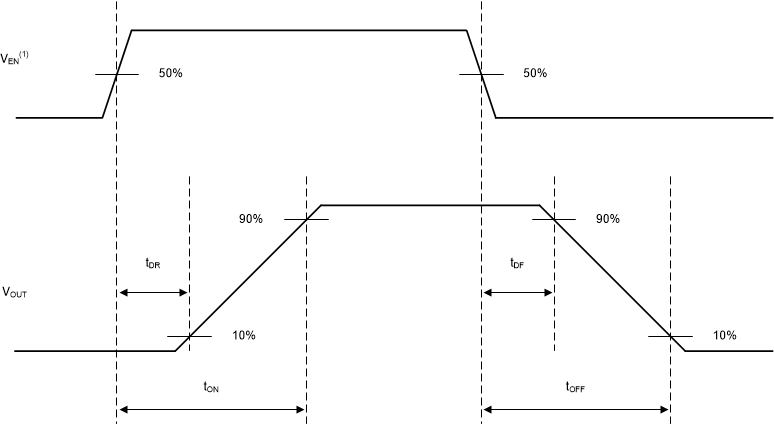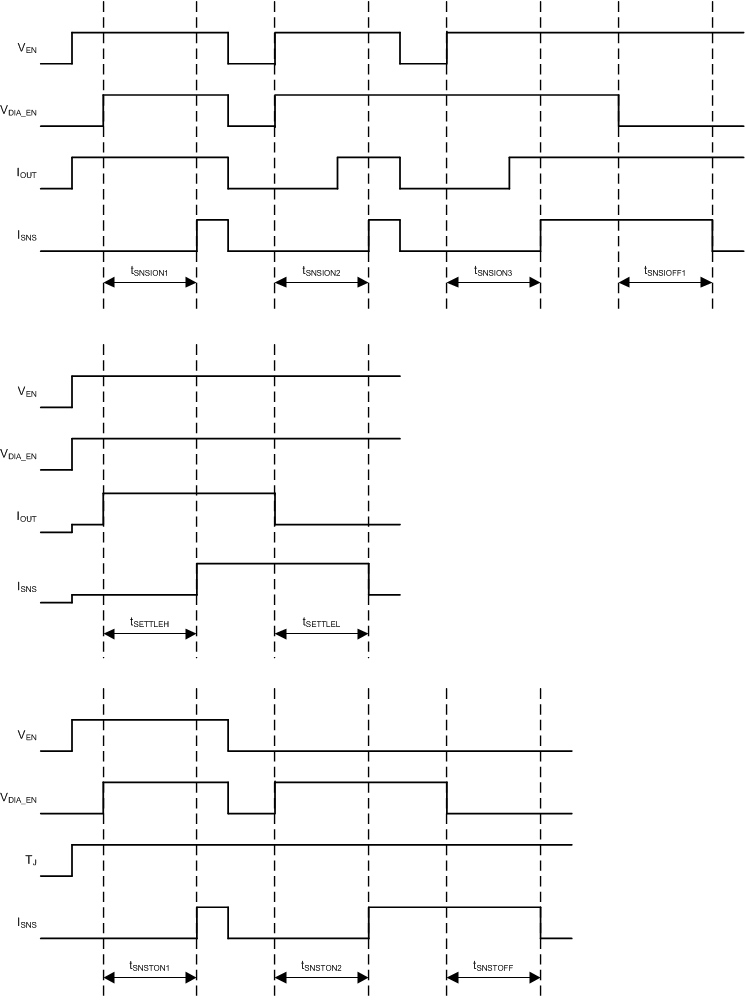ZHCSJT6B may 2019 – february 2023 TPS1HB16-Q1
PRODUCTION DATA
- 1 特性
- 2 应用
- 3 说明
- 4 Revision History
- 5 Device Comparison Table
- 6 Pin Configuration and Functions
- 7 Specifications
- 8 Parameter Measurement Information
-
9 Detailed Description
- 9.1 Overview
- 9.2 Functional Block Diagram
- 9.3
Feature Description
- 9.3.1 Protection Mechanisms
- 9.3.2 Diagnostic Mechanisms
- 9.4 Device Functional Modes
- 10Application and Implementation
- 11Device and Documentation Support
- 12Mechanical, Packaging, and Orderable Information
8 Parameter Measurement Information
 Figure 8-1 Parameter Definitions
Figure 8-1 Parameter Definitions
Rise and fall
time of VEN is 100 ns.
Figure 8-2 Switching Characteristics Definitions
Rise and fall times of
control signals are 100 ns. Control signals include:
EN, DIA_EN.
Figure 8-3 SNS
Timing Characteristics Definitions